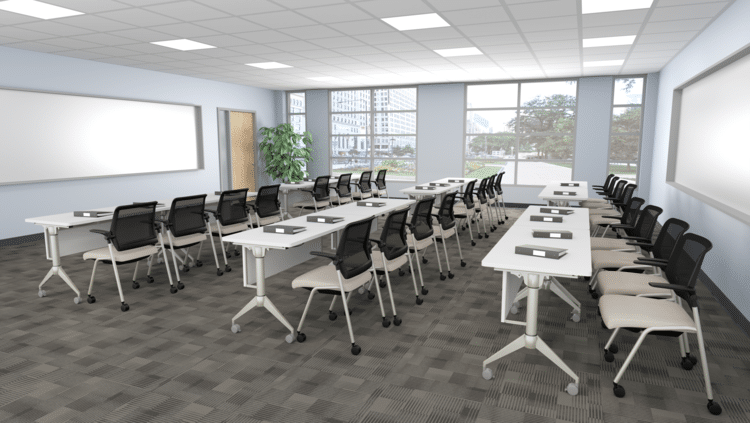
How to Design a Training Room
Author: Elijah Walters
Creating an effective training room in your office environment is crucial for fostering employee development and facilitating smooth onboarding processes. A well-designed training room can enhance learning experiences, boost engagement, and improve overall productivity. Here, we will explore key furniture and essential items to consider for designing a top-notch training room that meets your needs.
Ergonomic Seating
Comfort is paramount in a training environment. Invest in high-quality, ergonomic chairs that provide support and adjustability. Features to look for include:
- Adjustable height
- Lumbar support
- Swivel and tilt functions
- Breathable materials
- Nesting or storage capabilities
Ergonomic seating helps prevent fatigue and discomfort during long training sessions, allowing participants to stay focused and attentive.
Versatile Tables
A modern training room should be equipped with the latest audio-visual technology to facilitate interactive and engaging sessions. Essential equipment includes:
- High Resolution Projector or LED TV: Ensure clear visibility for all participants during presentations.
- Sound system: High-quality speakers and microphones for clear audio transmission.
- Interactive whiteboards: Encourage collaboration and dynamic presentations, people learn better when they can also visualize in addition to hearing.
- Video conferencing tools: Enable remote training sessions and meetings.
Invest in equipment that is user-friendly and reliable to minimize technical disruptions.
Audio-Visual Technology & Markerboards
Flexibility is key when selecting tables for your training room, select a table that is easy to move and store for quick reconfiguration of the room. Consider these options:
- Modular tables: These can be reconfigured to suit different group sizes and training styles, tables with locking casters are a great option.
- Folding or Nesting tables: Easy to store and move, ideal for multipurpose spaces, so you can quickly reconfigure the space for training sessions of any size.
- Height-adjustable tables: Accommodate various tasks and user preferences for sitting or standing.
Choose tables that are sturdy, easy to clean, and have integrated power solutions for charging laptops for those long training sessions. We use the general rule of thumb of 30 inches of width per person sitting behind the table to give enough space to be comfortable.
Create a Comfortable Environment
The overall environment plays a significant role in the effectiveness of a training room. Consider these elements:
- Natural light: If possible, utilize windows for natural light, which can enhance mood and productivity.
- Adjustable lighting: Install dimmable lights to customize the lighting environment based on different activities.
Good lighting is essential for maintaining focus and reducing eye strain.
- Climate control: Maintain a comfortable temperature with proper heating, ventilation, and air conditioning.
- Acoustics: Use acoustic panels or sound-absorbing materials to minimize noise distractions.
- Aesthetics: Choose a color scheme and décor that are both pleasing and conducive to learning.
A comfortable and well-designed environment enhances the overall training experience and helps participants stay engaged.
Designing an effective training room involves careful consideration of furniture, technology, and overall environment. By prioritizing comfort, flexibility, and modern amenities, you can create a training space that not only meets your needs but also fosters a positive and productive learning atmosphere. Investing in the right elements will ensure your training room is a valuable asset to your office, enhancing both employee development and organizational success.
